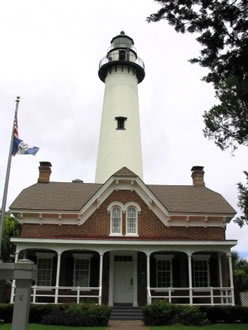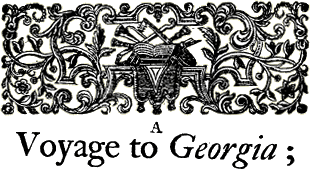 |
Hotel
and Travel Information
|
For general information about Saint Simon's Island, see the City Guide.
The King and Prince Hotel, our conference venue, has provided us with a custom registration form that you may print to mail or fax, or you may telephone the hotel at 912-638-3631. This form is for hotel registration only; is a separate registration fee of $165 for the conference itself that will cover food, equipment rental, etc.
You will find the conference registration form here.
An overflow hotel has been established at the Sea Gate Inn, about a quarter mile down the beach from the King and Prince. This is the only hotel within walking distance. Their telephone number is 1-800-562-8812. Speak to Ms. Carrie Juilano if possible.
SCSECS President Murray Brown advises that if you are flying in, you should first consider Jacksonville International Airport as point of arrival and departure. Commercial flights are also available to Savannah and one may connect to Brunswick as well-located just on the other side of the bridge from St Simon's. If you fly in to Atlanta, St Simon's Island is a four to five hour drive on interstate highways.
If you are a pilot yourself, St Simon's has a well-equipped airfield that serves the island and the immediate vicinity well.
If you are not planning to rent a car, and seek shuttle services at Jacksonville International Airport, you must notify either the King and Prince Hotel of your travel requirements or Express Shuttle (not to be confused with Gator City Taxi) well in advance of your arrival. You may reach Express Shuttle Services in Jacksonville Airport at 1-800-394-0116 or email your travel/flight information directly to Bob Glaeser rwglaeser@earthlink.net. He will do his best to coordinate trips to the Island. Express Shuttle requires a minimum of 100 dollars each way, and 15 dollars for each additional passenger after four persons. Upon arriving at the airport, look for the Express Shuttle booth (not Gator City Taxi) directly across from Baggage Claim, Pole number four. A placard reading SCSECS should be posted. It is 90 miles from Jacksonville to St Simons Island, so please plan accordingly.
Another carrier, Max Transport, also services St Simons Island, Brunswick, Savannah, and Jacksonville. This is the service used most frequently by the King & Prince Hotel. It will be important to give them your travel requirements well ahead of your arrival/departure. Reservations may be made by telephone, (912) 634-7749, or on their website, http://www.maxtransportcompany.com/.
Attractions
The beach is broad and beautiful. While the weather is frequently warm and mild (especially relative to more northern parts) with an average high temperature of 64 degrees during the last week of February, it can also be a bit chilly, with an average low temperature of 45 degrees. If you plan to do a bit of touring in the area when the conference is over, you will find many many interesting locations nearby including Jekyll Island and Cumberland Island. Cumberland is known for its feral horses, its beach, ruined mansions, and coastal forests. It is a protected preserve and is accessible only through the Forest Service-departing by boat from St Marys. You will need to make reservations well in advance for day trips and/or overnight camping. Other popular destinations close at hand are Sapelo Island (Where the Gullah language is preserved-and used--tours depart from Darien, a short distance from Brunswick), Savannah, and Charleston. Chartered fishing trips are available from many providers, and casino cruises are available from Brunswick.
Local History
James Oglethorpe's colony, Fort Frederica (est. 1736), was the southern-most English settlement on what is now the continental United States. Although there were Spanish missions located on the island in an earlier period (one of which lies between the King and Prince Hotel and the village), Fort Frederica was established to halt further Spanish incursions to the north. During the War of Jenkin's Ear, Oglethorpe and his followers (including an independent Highland regiment, Rangers, settlers, and Native Americans) confronted the Spanish force along the Military Road connecting Fort St Simons and Fort Frederica and defeated the Spanish force of some one hundred soldiers and officers on July 7, 1742 at Gully Hole Creek (afterward known as the Battle of Bloody Marsh). The site of the battle is located only a few hundred yards from the hotel.
|
John
and Charles Wesley arrived in Georgia in 1736--soon after the establishment of
Fort Frederica. Charles had been invited to serve as Oglethorpe's secretary as
well as the settlement's chaplain. He was ill suited for both tasks and owing
to illness (he apparently was afforded no quarters other than a lean-to and additionally
suffered from dysentery and a bad bout of boils) and much friction with the colonists,
he returned to England after only four months on the island. John remained for
almost two years. He had aimed to establish a mission to convert the Indians and
he hoped to marry. He accomplished neither.
Like his brother, John
had numerous problems with the colonists, and interaction with the many Moravians
in the settlement led him to a "crisis of faith"; his bad behavior toward
one Sophy Hopkey, however, led the elders to request that he leave the island
altogether. He complied on December 2, 1737. The supposed location of the Wesley
Oak on the grounds of Christ Episcopal Church (brother Charles was its first pastor)
is the spot where John Wesley is thought to have preached, and the church is only
a short distance from the settlement proper. Because a church building was not
yet constructed, services were held out of doors and in private homes up through
the Revolutionary period. Plans and funds were acquired by 1808. Unfortunately,
the War of 1812 interceded and as the local economy failed, funding dried up.
The church was finally completed in 1820 and was part of the first Anglican Diocese
in Georgia. The church was pressed into service during the Civil War as a barracks
for Federal troops. Not in a kind mood, they broke out the church's windows, burned
the pews, shot holes through the organ, destroyed the roof, and vandalized the
altar. Owing to Reconstruction politics and bank failures, the present building
was not completed until 1884.

Return
to the 2005 conference Home Page